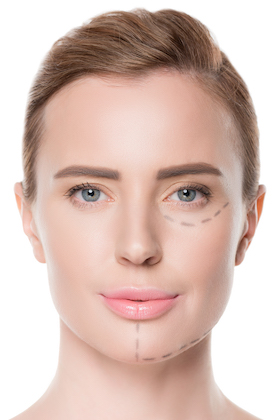
The idea behind having a facelift is to give the face a look that is youthful and rejuvenated. One aspect of having a facelift that is sometimes a mystery for patients is when is the best age to have the procedure. Is there such a thing as the “best age” or “best time” and is there also an age when a person is not able to gain the desired results anymore? In this article, the answer to these questions will be examined and explained in greater detail.
 When it comes to having a facelift, there is often a good amount of debate regarding the ideal time to have a procedure. Some people are afraid they will be wasting their money if they have the surgery at too early an age. There are others who are afraid of waiting too long and reaching a point where they will not be able to achieve their ideal results due to being too old.
When it comes to having a facelift, there is often a good amount of debate regarding the ideal time to have a procedure. Some people are afraid they will be wasting their money if they have the surgery at too early an age. There are others who are afraid of waiting too long and reaching a point where they will not be able to achieve their ideal results due to being too old.
It seems obvious to say but the ideal time is somewhere between having it at an age where the patient feels it is too early and waiting until an age where the results might be too drastic in appearance for the age of the patient. The goal of a facelift is to provide results that are natural and long-lasting and not so drastic that it is too obvious to others that surgical changes were made to the face.
While there are some patients who believe there is a “certain age” that is always the “right age,” there is actually not a particular age range that is the ideal choice for a facelift. The factors that play a part in deciding if a patient can benefit from a facelift include the current condition of the skin on their face, the amount of sun exposure on the skin, their lifestyle, and the genetics of the person. Each of these elements can play a role in determining if a person will start to develop deep wrinkles and sagging skin in their thirties and forties or if noticeable changes to the face will start to appear in their fifties (or beyond).
If a person starts to lose fat in their face and also develops sagging skin and jowls, they are likely ready for a facelift and neck lift no matter their age. On the other hand, a person who is experiencing wrinkles and fine lines that are visible, but not overly prominent, might be a better candidate for a Botox treatment.
As mentioned earlier in this article, there are some patients who worry that waiting too long to have a facelift will lower the chances of a successful procedure. Thankfully, the age of a person is not always a barrier to having facelift surgery. In addition to the current appearance of the face, the overall health of a person plays a part in the decision to perform the treatment. If an older patient is in good overall health and does not have major medical conditions or issues, there is a good chance that the surgeon might decide to perform a facelift. If there are medical issues that need to be addressed before having a procedure, the doctor will want to resolve them before moving forward with the treatment.
It is also not too late to consider having another facelift even if the patient already had one in the past. It is true that a facelift can make a person look younger and turn back the clock by taking years off the appearance of a person. However, the surgery does not stop the aging process. Instead, it essentially resets the clock to the point that the aging process starts once again.
Since the aging process does not stop, the patient will eventually start to see the impact of aging including the effects of gravity, stress, and exposure to the sun on the face. The patient will need to talk with their doctor to see if another facelift is necessary or if a noninvasive treatment can be performed too refresh the face. Some of the most popular noninvasive options include fillers, Botox, and laser resurfacing.
It is also important to note that not every patient enters the facelift process with the goal of reversing their appearance by decades. There are many patients who simply want to gain a refreshed and more youthful look that is not trying to make them look like they are in their twenties again. They likely want to look good for their age or even look a few years younger without looking like they are “trying too hard.”
The key to a successful facelift is to remember that it is not a “one size fits all” treatment and the surgery needs to be customized to meet the specific needs of the patient. A board-certified plastic surgeon will examine the patient and discuss their goals with them in order to set realistic expectations regarding the extent of the results that can be gained from having a facelift.
- MA